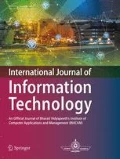Abstract
The data provided by individuals and various organizations while using internet applications and mobile devices are very useful to generate solutions and create new opportunities. The data which is shared needs to be precise to get the quality results. The data which may contain an individual’s sensitive information cannot be revealed to the world without applying some privacy preserving technique on it. Privacy preserving data mining (PPDM) and Privacy preserving data publishing (PPDP) are some of the techniques which can be utilized to preserve privacy. There are some positives and negatives for every technique. The cons frequently constitute loss of data, reduction in the utility of data, compromised diversity of data, reduced security, etc. In this paper, the authors propose a new technique called Remodeling, which works in conjunction with the k-anonymity and K-means algorithm to ensure minimum data loss, better privacy preservation while maintaining the diversity of data. Network data security is also handled by this proposed model. In this research paper, theoretically, we have shown that the proposed technique addresses all the above-mentioned cons and also discusses the merits and demerits of the same.

Similar content being viewed by others
References
Canbay P, Sever H (2015) The Effect of clustering on data privacy. IEEE 14th International Conference on Machine Learning and Applications
Gkoulalas-Divanis A, Loukides G, Sun J (2014) Publishing data from electronic health records while preserving privacy: a survey of algorithms. J Biomed Inform 50:4–19
Aggarwal CC, Philip SY (2008) A general survey of privacy-preservingdataminingmodelsandalgorithms. In: Privacy-preservingdatamining.Springer, Boston, MA
Huang Z, Du W, Chen B (2005) Deriving private information from randomized data. In Proceedings of the 2005 ACM SIGMOD international conference on Management of data, pp.37–48
He X, Chen H, Chen Y, Dong Y, Wang P, Huang Z (2012) Clustering-based k-anonymity. In Advances in Knowledge Discovery and Data Mining, Springer, pp.405–417
Saranya K, Premalatha K, Rajasekar SS (2015) A survey on privacy preserving data mining. IEEE Sponsored 2nd International Conference on Electronics and Communication System (ICECS)
Li X, Yan Z, Zhang P (2014) A review on privacy-preserving data mining. IEEE International Conference on Computer and Information Technology
Dhanalakshmi M, Siva Sankari E (2014) Privacy preserving data mining techniques-survey. IEEE International Conference on InformationCommunicationandEmbeddedSystems(ICICES)
Pingshui WANG (2010) Survey on privacy preserving data mining. Int J Digital Content Technol Appl 4(9)
Agrawal R, Srikant R (2000) Privacy-preserving data mining. ACM Sigmod Record, vol. 29, pp. 439–450
Fung BCM, Wang K, Chen R, Yu PS (2010) Privacy-preserving data publishing: a survey of recent developments. ACM Comput Surv (CSUR) 42:1–53
Xu L, Jiang C, Wang J, Yuan J, Ren Y (2014) Information security in big data: privacy and data mining. IEEE Access 2:1149–1176
Samarati P, Sweeney L (1998) Protecting privacy when disclosing information: k-anonymity and its enforcement through generalization and suppression. Computer Science Laboratory, SRI International
Sweeney L (2002) k-anonymity: a model for protecting privacy. Int J Uncertain Fuzziness Knowl Based Syst 10:557–570
Thein HTT, Tun KMM (2015) Evaluation of differential evolution and K-means algorithms on medical diagnosis. In Information Technology: Towards New Smart World (NSITNSW), 2015 5th National Symposium on, pp. 1–4
Sweeney L (2002) Achieving k-anonymity privacy protection using generalization and suppression. Int J Uncertain Fuzziness Knowl Based Syst 10(5):571–588
Machanavajjhala A, Gehrke J, Kifer D, Venkitasubramaniam M (2006) L-diversity: privacy beyond k-anonymity. In Data Engineering, 2006. ICDE ’06. Proceedings of the 22nd International Conference on, pp. 24–24
Li N, Li T, Venkatasubramanian S (2007) t-closeness: privacy beyond k-anonymity and l-diversity. In ICDE 7: 106–115
Pandit A, Polina P, Kumar A (2014) CLOPRO: A framework for context cloaking privacy protection. International Conference on Communication Systems and Network Technologies (CSNT)
Yadav J, Sharma M (2013) A review of K-mean algorithm. Int J Eng Trends Technol 4(7):2972–2976
Oh Y, Jung K, Park S (2014) A privacy preserving technique to prevent sensitive behavior exposure in semantic location-based service. 18th International Conference on Knowledge-Based and Intelligent Information & Engineering Systems—KES2014
Shanthi AS, Karthikeyan M (2012) A review on privacy preserving data mining. 2012 IEEE International Conference on Computational Intelligence and Computing Research
Author information
Authors and Affiliations
Corresponding author
Rights and permissions
About this article
Cite this article
Shastri, M.D., Pandit, A.A. Remodeling: improved privacy preserving data mining (PPDM). Int. j. inf. tecnol. 13, 131–137 (2021). https://doi.org/10.1007/s41870-020-00531-8
Received:
Accepted:
Published:
Issue Date:
DOI: https://doi.org/10.1007/s41870-020-00531-8




